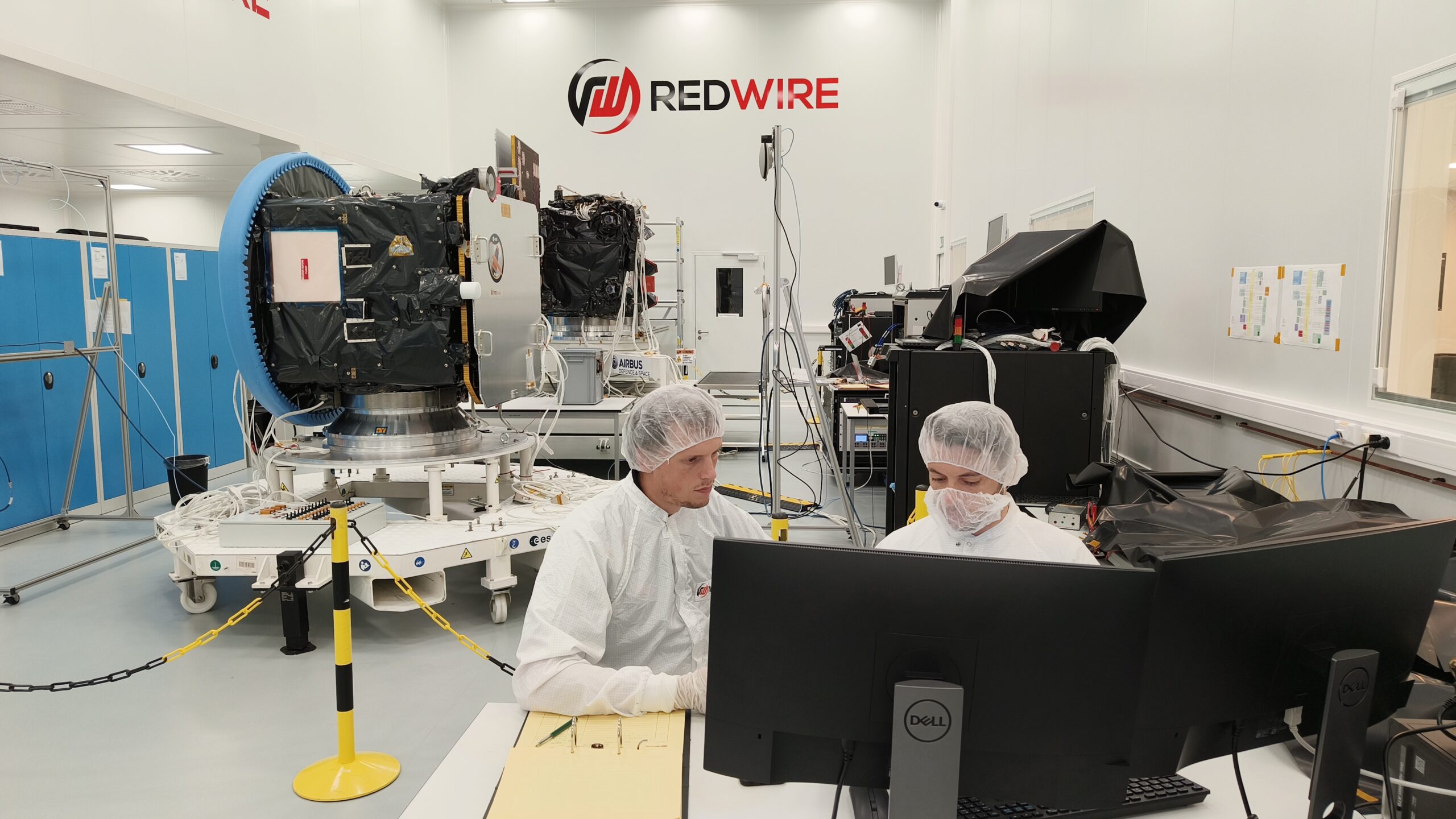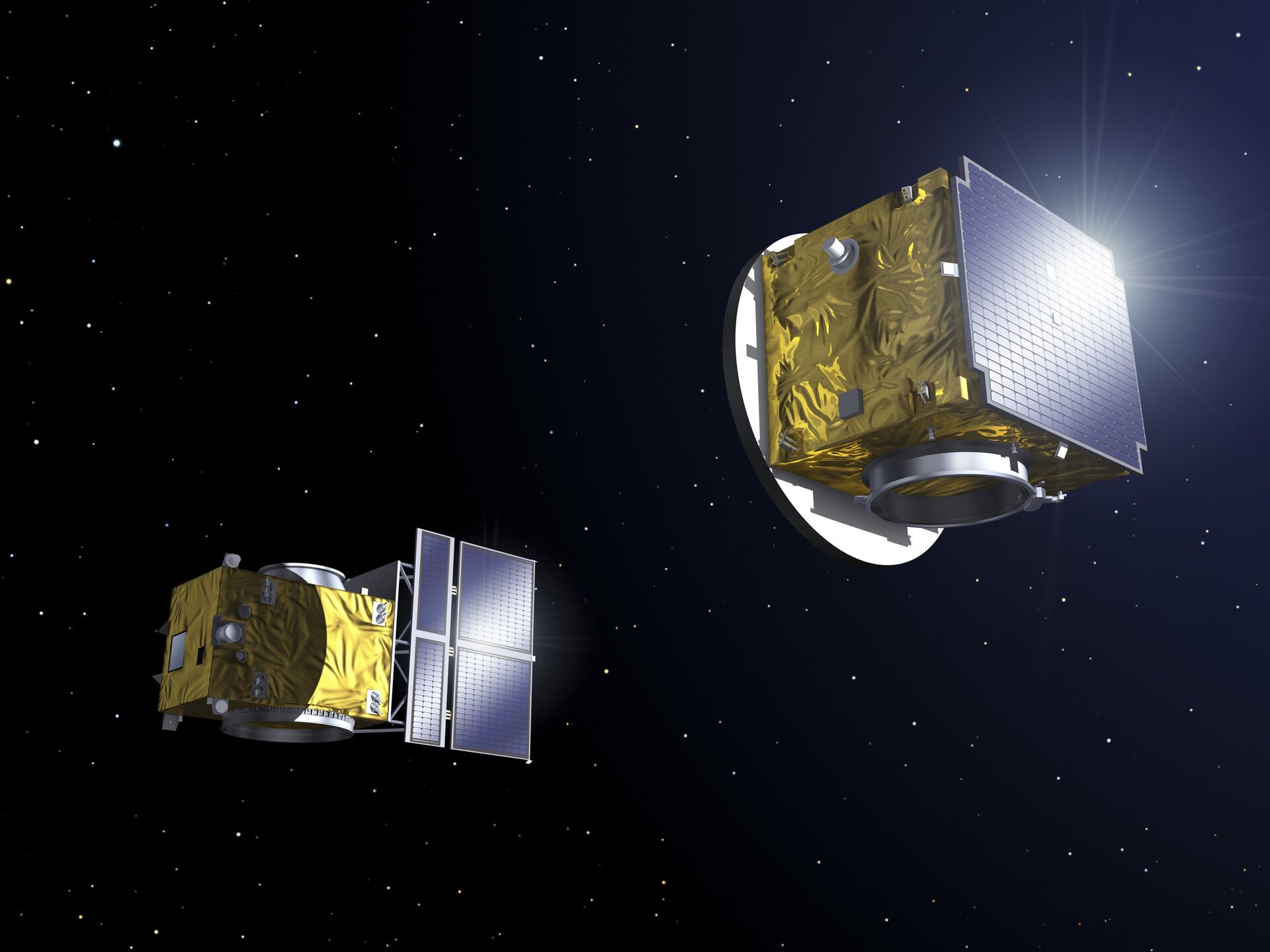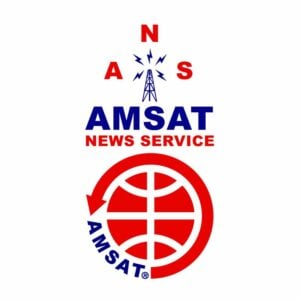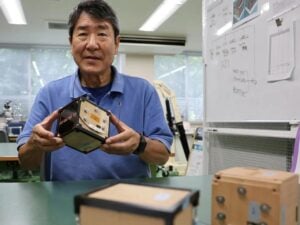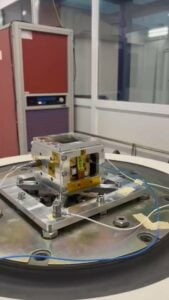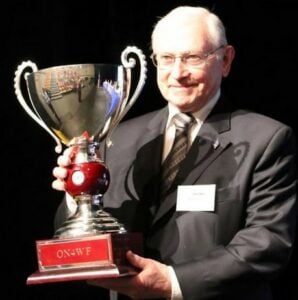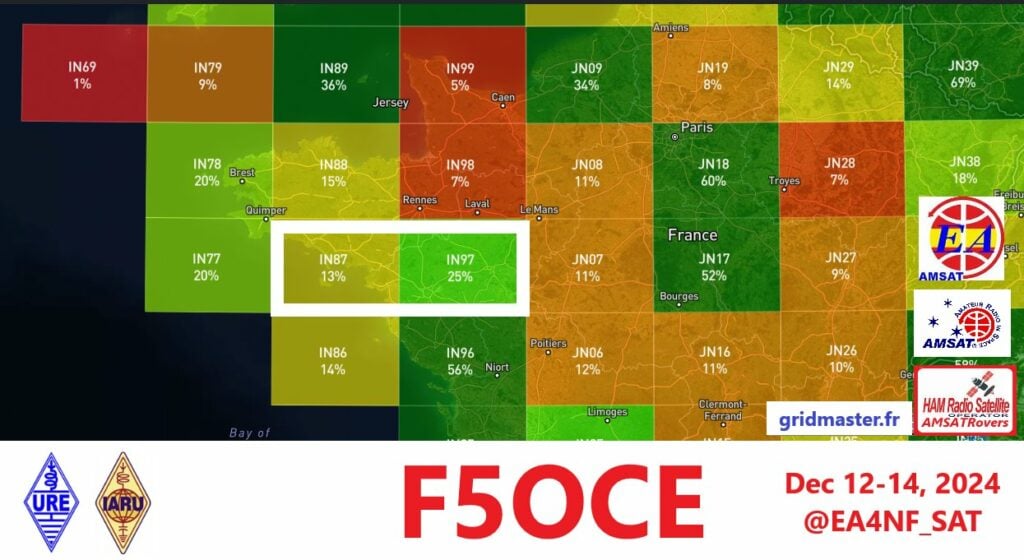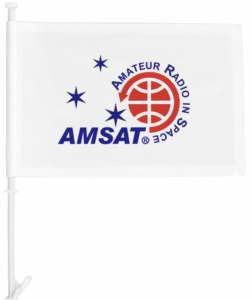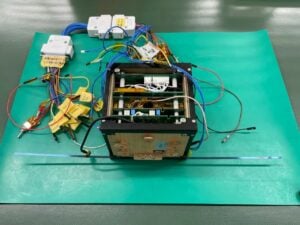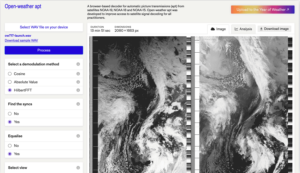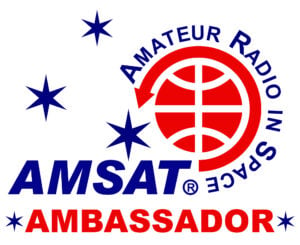In this edition:
* Taiwan’s PARUS-T1A Launch Failed
* NASA Astronauts Face More Time In Space With Return Delayed
* NASA Now Knows Why Its Mars Helicopter Crashed
* Changes to AMSAT-NA TLE Distribution
* ARISS SSTV Event December 25 – January 5
* ARISS News
* Upcoming Satellite Operations
* AMSAT Ambassador Activities
* Satellite Shorts From All Over
The AMSAT News Service bulletins are a free, weekly news and information service of AMSAT, the Radio Amateur Satellite Corporation. ANS publishes news related to Amateur Radio in Space including reports on the activities of a worldwide group of Amateur Radio operators who share an active interest in designing, building, launching and communicating through analog and digital Amateur Radio satellites.
The news feed on http://www.amsat.org publishes news of Amateur Radio in Space as soon as our volunteers can post it.
Please send any amateur satellite news or reports to: ans-editor [at] amsat.org
You can sign up for free e-mail delivery of the AMSAT News Service Bulletins via the ANS List; to join this list see: https://mailman.amsat.org/postorius/lists/ans.amsat.org/
ANS-357 AMSAT News Service Weekly Bulletins
To: All RADIO AMATEURS
From: Radio Amateur Satellite Corporation
712 H Street NE, Suite 1653
Washington, DC 20002
DATE 2024 Dec. 22
Taiwan’s PARUS-T1A Launch Failed
Radio Amateurs around the world were anticipating a new FM repeater in space as a Christmas present this year, but it seems they will find only coal in their stockings. The rocket carrying the PARUS T1A satellite failed to reach orbit.
Space One, a Japanese space startup, said its second attempt to launch a rocket carrying satellites into orbit had been aborted minutes after liftoff Wednesday and destroyed itself, nine months after the company’s first launch attempt ended in an explosion.
Space One’s Kairos No. 2 rocket lifted off from a coastal site in the mountainous prefecture of Wakayama in central Japan. The company said it had aborted the flight after concluding that it was unlikely to complete its mission.
“We are very sorry that we could not achieve as far as a final stage of the mission,” Space One President Masakazu Toyoda told a news conference Wednesday. “We don’t consider this a failure because we are getting valuable data that will help our pursuit toward a next challenge.”
He said he hoped to find the cause to address the problems as soon as possible to achieve a success next time.
Company executive and space engineer Mamoru Endo said the abnormality in the first stage engine nozzle or its control system is likely to have caused an unstable flight of the rocket, which started spiraling in midflight and eventually destroyed itself about three minutes after liftoff, using its autonomous safety mechanism.
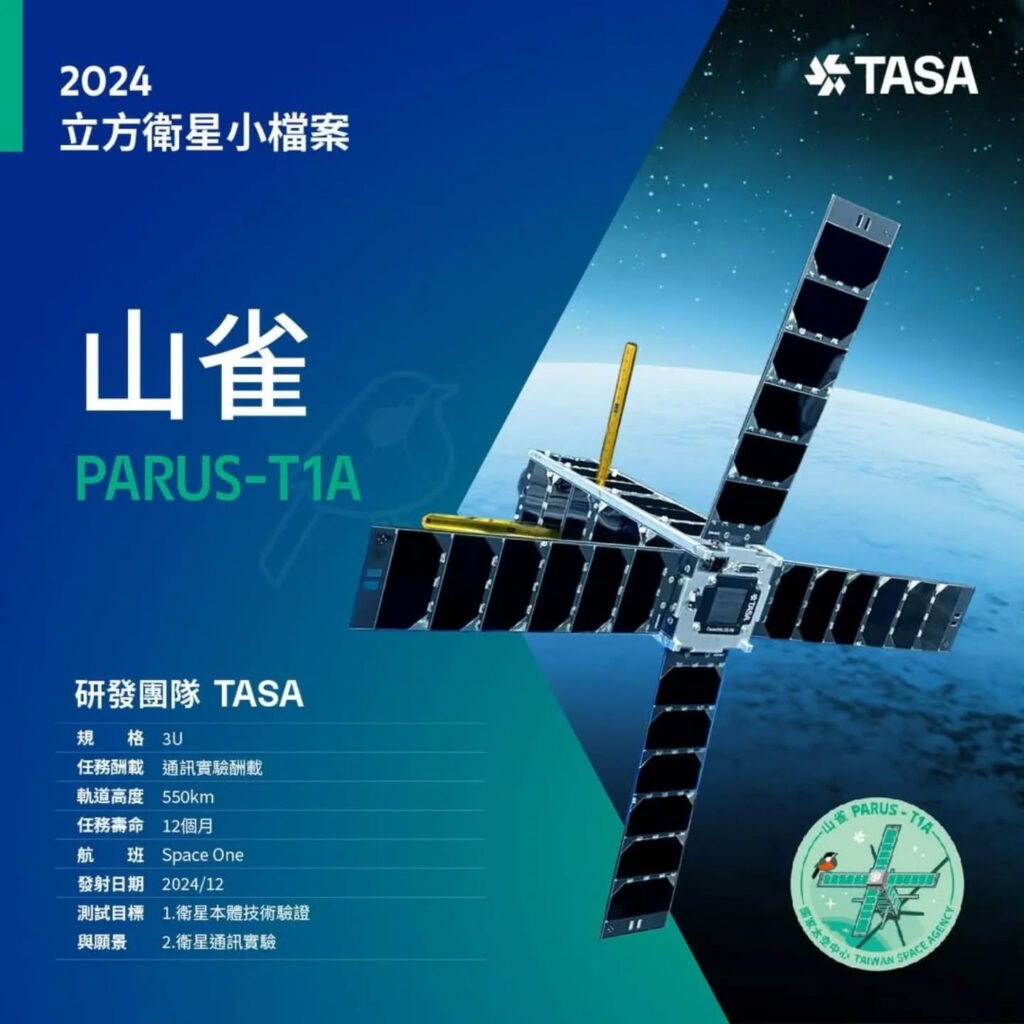
The Kairos No. 2 rocket was carrying five small satellites, including one from the Taiwanese space agency and several from Japanese startups. The Taiwanese satellite was PARUS-T1A a 3U CubeSat that featured an FM crossband repeater, as well as an APRS digipeater to provide global amateur activities at the same frequency of ISS APRS channel 145.825MHz.
A second Taiwanese amateur satellite, PARUS-T1, carrying an APRS store-and-forward system, is still scheduled for launch next month on a SpaceX mission. Both satellites were constructed by students at National Formosa University.
Space One said it had fixed the cause of the debut flight failure, which stemmed from a miscalculation of the rocket’s first-stage propulsion.
Japan hopes the company can pave the way for a domestic space industry that competes with the United States.
[ANS thanks the Associated Press and reporter Mari Yamaguchi for the above information]
The 2024 AMSAT President’s Club coins are still available!
Only 10 Days Left!!!
Help Support GOLF and Fox Plus
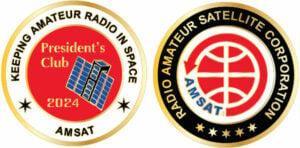
Join the AMSAT President’s Club today and help
Keep Amateur Radio in Space!
https://www.amsat.org/join-the-amsat-presidents-club/
NASA Astronauts Face More Time In Space With Return Delayed
NASA announced on Tuesday the latest delay in the homecoming for Butch Wilmore and Suni Williams, KD5PLB. Their space mission was extended again. That means they won’t be back on Earth until spring, 10 months after rocketing into orbit on Boeing’s Starliner capsule.
The two test pilots planned on being away just a week or so when they blasted off June 5 on Boeing’s first astronaut flight to the International Space Station. Their mission grew from eight days to eight months after NASA decided to send the company’s problem-plagued Starliner capsule back empty in September.
Now the pair won’t return until the end of March or even April because of a delay in launching their replacements, according to NASA.
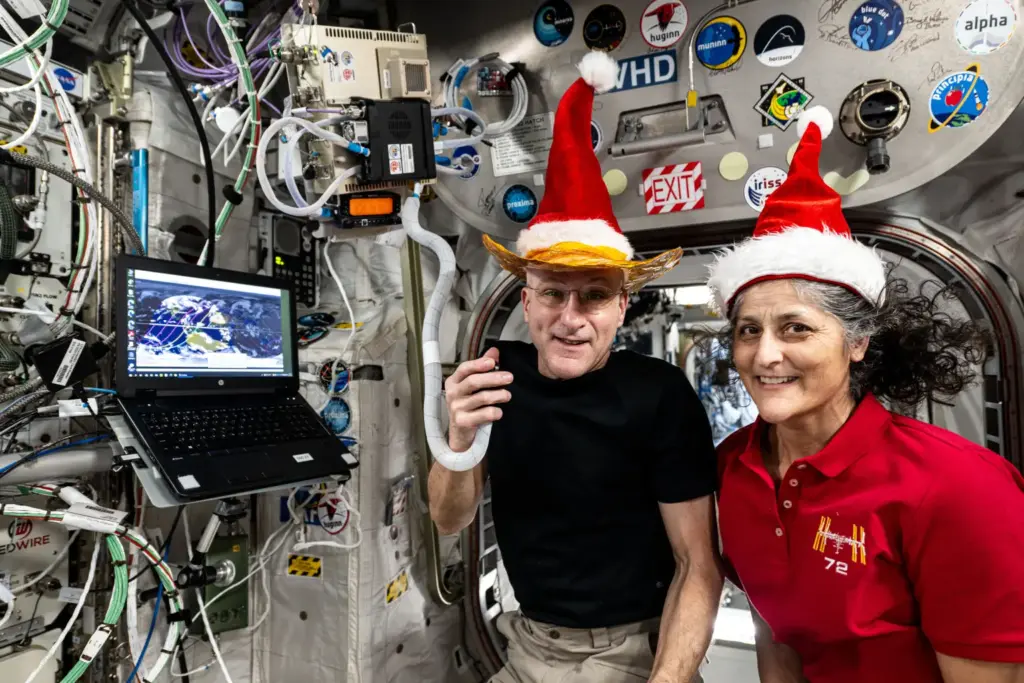 NASA shared a holiday snapshot of astronauts Don Pettit and Suni Williams on Dec. 17. [Credit: NASA Johnson]
NASA shared a holiday snapshot of astronauts Don Pettit and Suni Williams on Dec. 17. [Credit: NASA Johnson]
NASA’s next crew of four was supposed to launch in February, followed by Wilmore’s and Williams’ return home by the end of that month alongside two other astronauts. But SpaceX needs more time to prepare the brand new capsule for liftoff. That launch is now scheduled for no earlier than late March.
Last month, news articles suggesting that Ms. Williams was experiencing health problems during her unplanned extended stay in orbit set off widespread rumors on social media. NASA’s medical chief, Dr. James Polk, assured the public on November 14 that Williams is healthy and not suffering from any medical problems.
“I think there’s some rumors around outside there that I’m losing weight and stuff,” Williams said in an interview on November 12. “No, I’m actually right at the same amount. Things shift around quite a bit, you know? ”
Not only is she healthy, according to her and NASA, but they made Williams commander of Expedition 72 crew. As KD5PLB, she continues to be an active participant in ARISS contacts during her time aboard the ISS.
[ANS thanks The Washington Post, Space.com, and NASA for the above information]
Need new satellite antennas?
Purchase M2 LEO-Packs from the AMSAT Store.

When you purchase through AMSAT, a portion of the proceeds goes towards
Keeping Amateur Radio in Space.
https://amsat.org/product-category/hardware/
NASA Now Knows Why Its Mars Helicopter Crashed
Investigating an aircraft crash is no simple task here on Earth. Imagine how much more difficult it would be to diagnose a helicopter accident that took place 69 million miles away with none of the usual data present to help. NASA had to do just that after its Ingenuity Mars Helicopter suffered an accident on Jan. 18, 2024, that has since left it grounded in a crater on Mars. And now, after months of collecting data, the space agency may have finally figured out what happened.
On April 19, 2021, the NASA Ingenuity Mars Helicopter made history by lifting off the Jezero Crater’s floor and becoming the first aircraft to fly on a celestial entity other than Earth. The helicopter was supposed to fly only five experimental flights over 30 days to demonstrate that flight on Mars was possible. But it exceeded all expectations, conducting 72 flights over three years, setting all sorts of altitude records in the process, ending with that early 2024 accident.
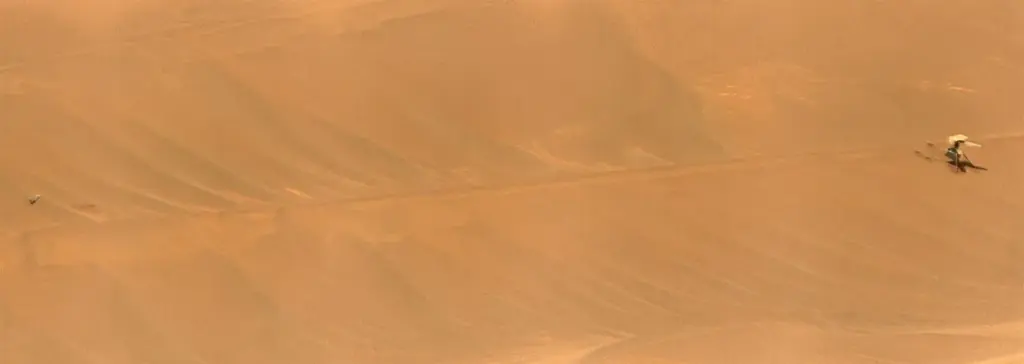 The wreckage of the Inguity Mars Helicopter as seen by the Mars Rover Perseverance. The helicopter is on the right and the broken rotor is approximately 49 feet away on the left. [Photo: NASA/JPL-Caltech/LANL/CNES/CNRS]
The wreckage of the Inguity Mars Helicopter as seen by the Mars Rover Perseverance. The helicopter is on the right and the broken rotor is approximately 49 feet away on the left. [Photo: NASA/JPL-Caltech/LANL/CNES/CNRS]
The final moments of the helicopter’s flight were more or less a mystery at first. Ingenuity lifted off like it had 71 times before. Then camera footage showed that it began initiating descent after just 19 seconds of flight. By the time 32 seconds had elapsed, the helicopter was on the Martian surface again and had halted communications. Six days later, the helicopter beamed back images that showed it had sustained severe rotor-blade damage and would no longer be able to fly.
Now, NASA believes that the navigation system was ultimately to blame. The navigation system used the helicopter’s downward-facing camera to track visual features on the ground. During this final flight, the helicopter was flying over a portion of the Jezero Crater that is known for textured, featureless sand ripples. The navigation system was thus unable to find any suitable ground features to track for a landing.
From there, several things went wrong. NASA says that the helicopter made hard contact with a sand-ripple slope, causing it to pitch and roll. The sudden change in altitude was too much for the rotor blades, and four of them broke off at their weakest points. This caused the rotor system to vibrate excessively, which ripped one of the blades clean off. Finally, the incident generated an excessive power draw that caused communications to fail.
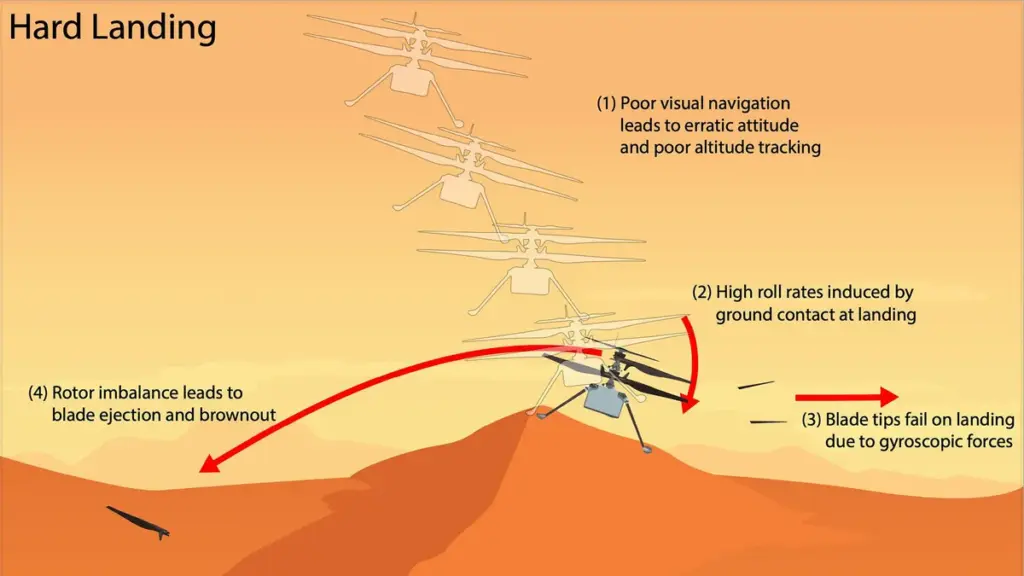
NASA’s graphic depicts the most likely scenario for the accident, in which Ingenuity landed hard on a sand-ripple slope, causing irreparable rotor-blade damage.
[
“When running an accident investigation from 100 million miles away, you don’t have any black boxes or eye witnesses,” said Håvard Grip, Ingenuity’s first pilot and research technologist at JPL Robotics. “While multiple scenarios are viable with the available data, we have one we believe is most likely: Lack of surface texture gave the navigation system too little information to work with.”
Nobody expected Ingenuity to last as long as it did. Its flights gave researchers excellent aerial views of our red neighbor. Even now, as it lies in the sands of the Jezero Crater, Ingenuity can no longer fly but still beams back weather and avionics data to NASA. The avionics data along with the flight data from Ingenuity’s 72 flights — combined with Ingenuity’s incredible longevity — are helping NASA develop smaller, lighter avionics for future aircraft on Mars.
“Because Ingenuity was designed to be affordable while demanding huge amounts of computer power, we became the first mission to fly commercial off-the-shelf cellphone processors in deep space,” said Ingenuity project manager Teddy Tzanetos. “We’re now approaching four years of continuous operations, suggesting that not everything needs to be bigger, heavier and radiation-hardened to work in the harsh Martian environment.”
Tzanetos and his team are already working on another Mars helicopter. It’s approximately 20 times heavier than the Ingenuity and is being designed to carry several pounds of science equipment while autonomously exploring remote locations on Mars.
[ANS thanks CNET.com and space reporter Joe Hindy for the above information]
Want to fly the colors on your own grid expedition?
Get your AMSAT car flag and other neat stuff from our Zazzle store!
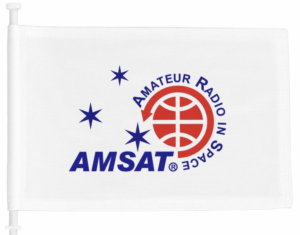
25% of the purchase price of each product goes towards
Keeping Amateur Radio in Space
https://www.zazzle.com/amsat_gear
Changes to AMSAT-NA TLE Distribution for Dec. 20
Two Line Elements or TLEs, often referred to as Keplerian elements or keps in the amateur community, are the inputs to the SGP4 standard mathematical model of spacecraft orbits used by most amateur tracking programs. Weekly updates are completely adequate for most amateur satellites. TLE bulletin files are updated daily in the first hour of the UTC day. New bulletin files will be posted immediately after reliable elements become available for new amateur satellites. More information may be found at https://www.amsat.org/keplerian-elements-resources/.
This week there are no additions or deletions to the AMSAT TLE distribution.
[ANS thanks Joe Fitzgerald, KM1P, AMSAT Orbital Elements Manager for the above information]
ARISS SSTV Event December 25 – January 5
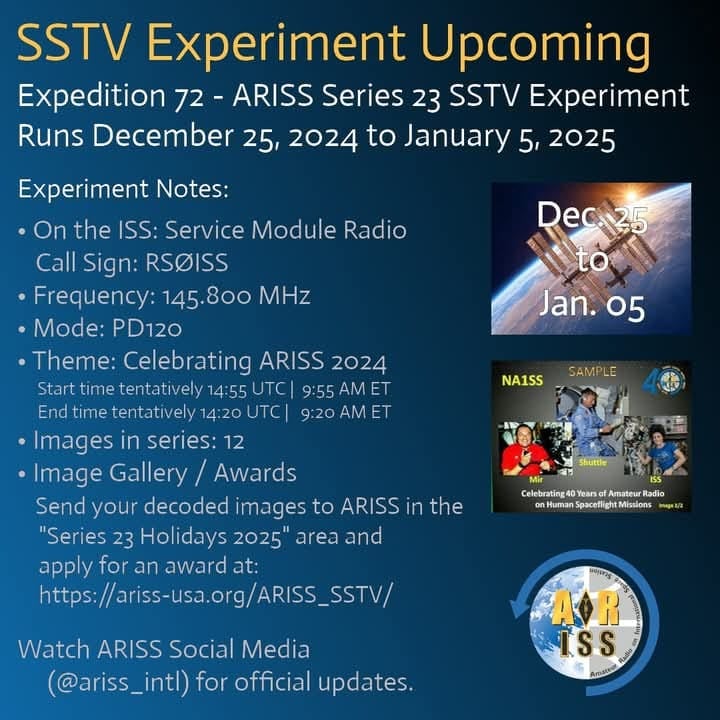
[ANS thanks ARISS for the above information.]
ARISS NEWS
Amateurs and others around the world may listen in on contacts between amateurs operating in schools and allowing students to interact with astronauts and cosmonauts aboard the International Space Station. The downlink frequency on which to listen is 145.800 MHz worldwide.
RECENTLY COMPLETED:
Zespół Szkół Łączności, Warszawa, Poland, direct via SP5KAB
The ISS callsign was presently scheduled to be OR4ISS
The scheduled crewmember was Nick Hague, KG5TMV
The ARISS mentor was SP3QFE
Contact was successful: Mon 2024-12-16 08:35:06 UTC 71 degrees maximum elevation.
Congratulations to the Zespół Szkół Łączności students, Nick, mentor SP3QFE, and ground station SP5KAB!
Watch for Livestream at https://www.youtube.com/live/DBafZYpxolI
Sally Ride Elementary School, Orlando, Florida, direct via K1AA
The ISS callsign was presently scheduled to be NA1SS
The scheduled crewmember was Sunita Williams, KD5PLB
The ARISS mentor was AA4KN
Contact was successful: Tue 2024-12-17 18:49:38 UTC 30 degrees maximum elevation.
Congratulations to the Sally Ride Elementary School students, Sunita, mentor AA4KN, and ground station K1AA!
Watch for Livestream at https://youtube.com/live/DuCNyWOPxH0?feature=share
UPCOMING:
ARISS school contacts are currently planned to resume the week of 2025-01-13 to 2025-01-19.
Many times a school may make a last minute decision to do a Livestream or run into a last minute glitch requiring a change of the URL but we at ARISS may not get the URL in time for publication. You can always check https://live.ariss.org/ to see if a school is Livestreaming.
The crossband repeater continues to be ACTIVE (145.990 MHz up {PL 67} & 437.800 MHz down). If any crewmember is so inclined, all they have to do is pick up the microphone, raise the volume up, and talk on the crossband repeater. So give a listen, you just never know.
The packet system is also active (145.825 MHz up & down) until December 25, when the SSTV event begins.
Ham TV – STATUS – Stowed. Default mode is for scheduled digital amateur television operations (2395.00 MHz down).
As always, if there is an EVA, a docking, or an undocking; the ARISS radios are turned off as part of the safety protocol. Powering OFF for U.S. EVA on Jan 23. ON TBD.
Note, all times are approximate. It is recommended that you do your own orbital prediction or start listening about 10 minutes before the listed time.
The latest information on the operation mode can be found at https://www.ariss.org/current-status-of-iss-stations.html
The latest list of frequencies in use can be found at https://www.ariss.org/contact-the-iss.html
[ANS thanks Charlie Sufana, AJ9N, one of the ARISS operation team mentors for the above information]
Upcoming Satellite Operations
None announced at this time.
A growing number of satellite rovers are currently engaged in sharing their grid square activations on https://hams.at. By visiting the website, you gain easy access to comprehensive information about the operators responsible for activating specific grid squares. Additionally, you have the ability to assess the match score between yourself and a particular rover for a given pass, while also being able to identify the upcoming satellite passes that are accessible from your location.
[ANS thanks Ian Parsons, K5ZM, AMSAT rover page manager, for the above information]
AMSAT Ambassador Activities
AMSAT Ambassadors provide presentations, demonstrate communicating through amateur satellites, and host information tables at club meetings, hamfests, conventions, maker faires, and other events.
February 14-15, 2025
Yuma HAMCON and Southwestern Division Convention
Yuma County Fairgrounds
Yuma, AZ
https://www.yumahamfest.com/
N1UW
[ANS thanks Bo Lowrey, W4FCL, Director – AMSAT Ambassador Program, for the above information]
Satellite Shorts From All Over
+ AO-73 (a.k.a. FUNcube 1) has been switched from autonomous mode to continuous transponder mode for the holiday period. This means that the transponder is available for use 24/7. AO-73 is anticipated to revert to autonomous mode sometime after January 5, 2025. In autonomous mode, the transponder is only available when the satellite is in eclipse. (ANS thanks AMSAT-UK for the above information.)
+ Two Chinese astronauts aboard their country’s orbiting space station spent nine hours working outside in the cold vacuum of space, the longest recorded spacewalk, the Chinese space administration has said. The astronauts on China’s Shenzhou-19 mission, Cai Xuzhe and Song Lingdong, finished their first “extravehicular activities” — spacewalking in popular parlance — this week, apparently nudging past the previous record of eight hours and 56 minutes set by two American astronauts in 2001, according to China’s Manned Space Agency. The feat was another sign of China’s ambitions to project its power and prestige in space. (ANS thanks The New York Times for the above information.)
+ The internet news site MSN recently published a feature on the history of amateur radio and astronauts in orbit, beginning with Owen Garriott, W5LFL, in 1983 and continuing to the present ARISS program. “How Amateur Radio Is Connecting Astronauts In Space With Kids On Earth” was written by Leonard David. See it at http://bit.ly/4gnfE3y (ANS thanks msn.com for the above information.)
+ The first Block 2 version of the giant SpaceX Starship, Ship 33, recently rolled out for testing and completed its first static fire test. It will be stacked on Booster 14 before it is targeted to complete the first flight of the Block 2 reusable upper stage in January. This upgraded Ship adds catch hardware and an additional ring, making it 1.8 m taller and now totaling 124.4 m (408 feet) when eventually stacked on top of Booster 14. The added height will allow it to pack 300 tons more propellant. (ANS thanks The Orbital Index for the above information.)
+ Your AMSAT News Service volunteer editors, Mark Johns, KØJM; Paul Stoetzer, N8HM; Frank Karnauskas, N1UW; and Mitch Ahrenstorff, ADØHJ, wish all of our readers the happiest of holidays.
Join AMSAT today at https://launch.amsat.org/
In addition to regular membership, AMSAT offers membership to:
* Societies (a recognized group, clubs or organization).
* Primary and secondary school students are eligible for membership at one-half the standard yearly rate.
* Post-secondary school students enrolled in at least half time status shall be eligible for the student rate for a maximum of 6 post-secondary years in this status.
* Memberships are available for annual and lifetime terms.
Contact info [at] amsat.org for additional membership information.
73 and remember to help Keep Amateur Radio in Space!
This week’s ANS Editor, Mark Johns, KØJM
mjohns [at] amsat.org

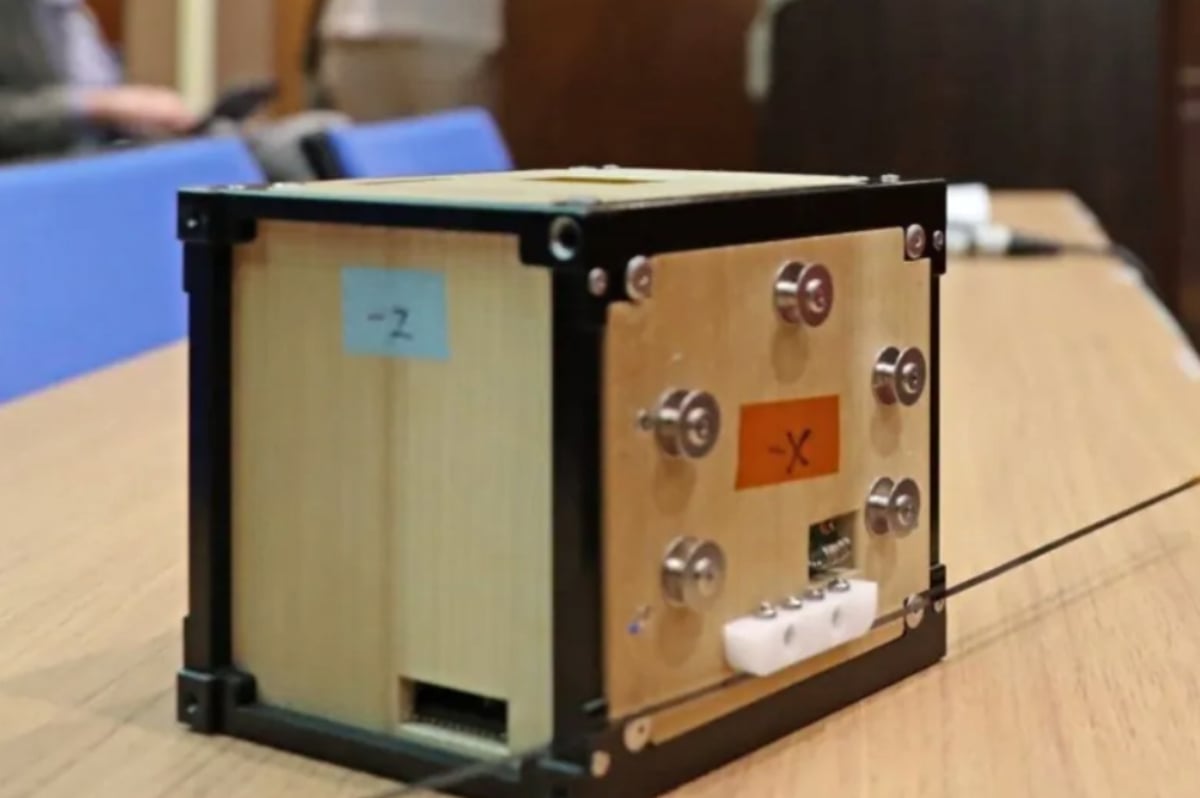
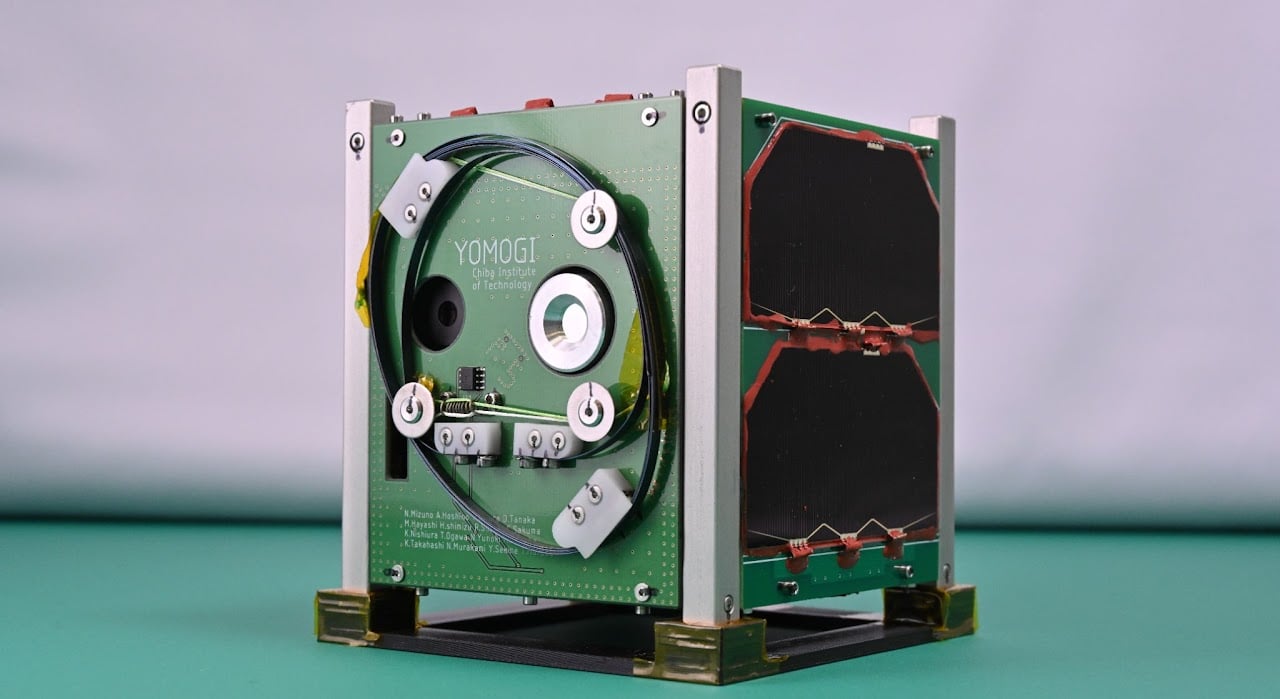
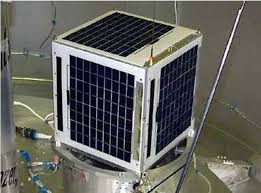
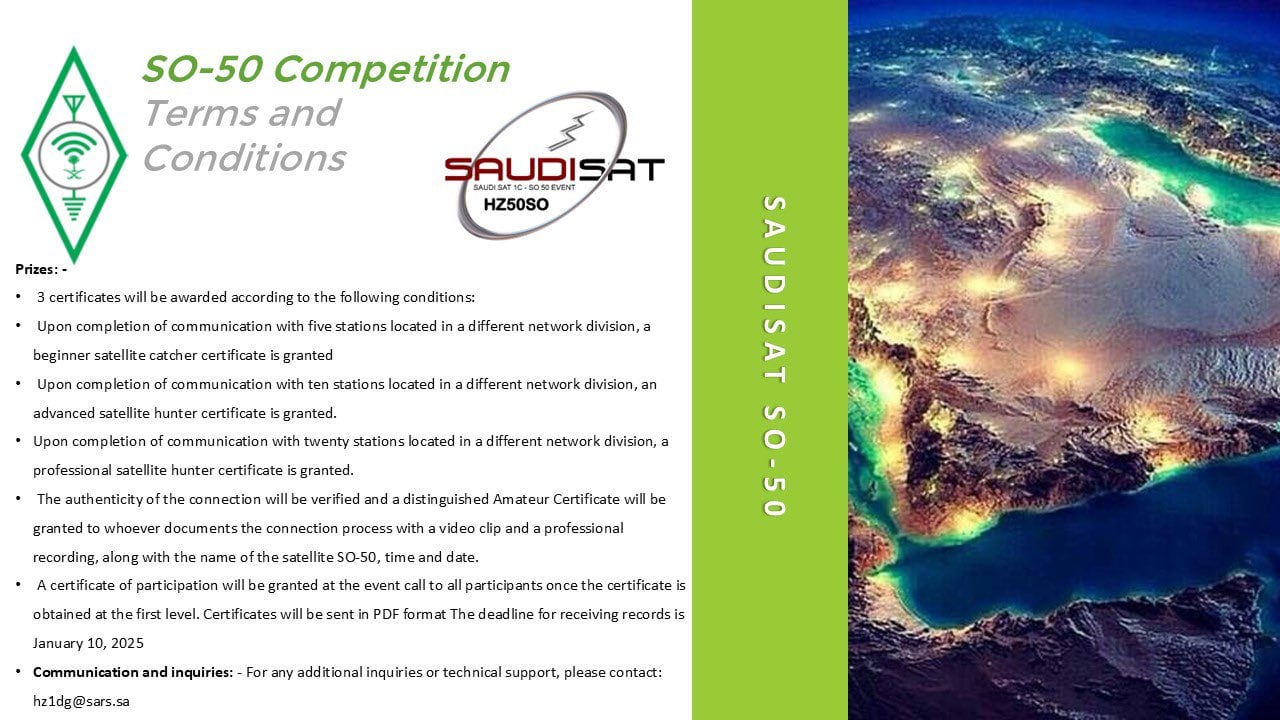
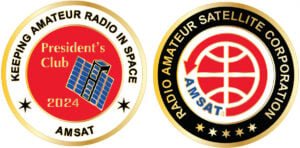 Join the AMSAT President’s Club today and help
Join the AMSAT President’s Club today and help 